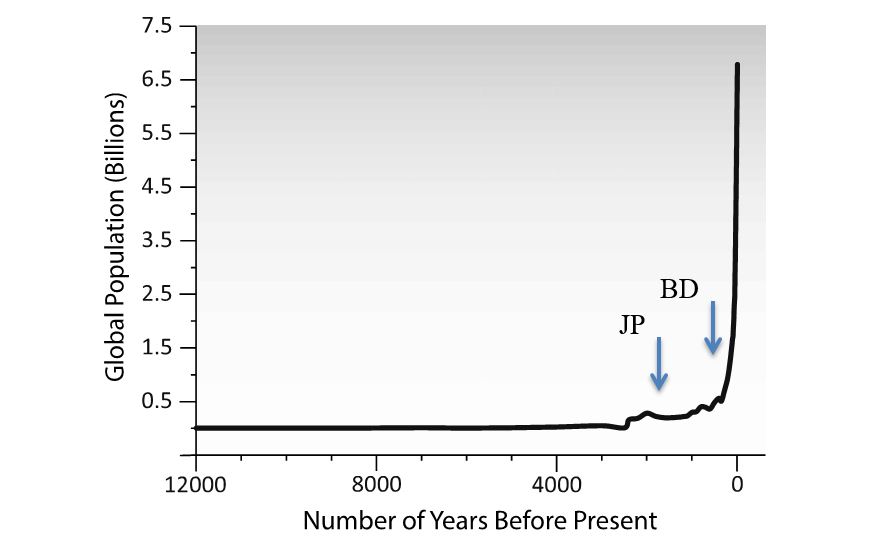
…all these pandemics share a common factor, namely the role of international travel in spreading the contagion.
The Justinian Plague (541-546 CE, with intermittent recurrences until about 750 CE) probably killed more people as a percentage of global population than any other pandemic. The Black Death, which peaked in 1347-1351 CE, and the incorrectly named Spanish Influenza (1918-1920) are close seconds and thirds. The SARS-CoV-2 virus, which is responsible for our current COVID-19 pandemic, is unlikely to match these grim statistics, thanks largely to modern medicine. Yet all these pandemics share a common factor, namely the role of international travel in spreading the contagion. The Justinian Plague likely originated in Asia, and was carried to the Mediterranean region by trading ships that also hosted fleas on rats (and possibly people). Coastal trading vessels were the fastest way to travel internationally in those days, and rats and fleas were frequent hitchhikers. The Black Death likely followed a similar route. The Spanish Influenza may have originated in the US and spread to Europe on troopships. While COVID-19 hopefully will not match the death tolls of these earlier pandemics, it has clearly eclipsed them in one important area: the rate at which it has spread around the world (a few months) thanks to the widespread availability and speed of modern air travel. Earlier plagues took several years to develop.

Perhaps we’re seeing evolution in action – just like plagues of old, the most successful pathogens are those that are best able to hitch a ride on the current favored mode of international travel.
While voters in Western democracies debate the best way for governments to handle the virus, the role of the global airline industry in spreading COVID-19 has largely escaped scrutiny. For years, many people benefited as the industry prospered by offering ever-cheaper and more convenient ways to travel across the globe. But like so many technologies, there are hidden costs to cheap international travel. The rapid spread of COVID-19 is likely one of them. Perhaps we’re seeing evolution in action – just like plagues of old, the most successful pathogens are those that are best able to hitch a ride on the current favored mode of international travel. Unfortunately, we don’t know whether air travel’s role in the spread of the pandemic is restricted to simply the rapid delivery of contagious people to most parts of the globe, or if the spread of contagion is actually magnified within the cramped quarters of an aircraft cabin. Future epidemiological research may be able to tease this out, but in the meantime some background is useful.
A basic rule of aircraft design is to minimize drag and weight, because these determine how much fuel is consumed. But the designers of large passenger aircraft face a series of trade-offs that reflect the laws of physics and economics on one hand, and passenger comfort on the other. One such trade-off involves maximizing the number of passengers and their comfort while minimizing the cross-sectional area of the fuselage to reduce drag. Since the airline needs to sell lots of seats to be profitable, this generally means sitting elbow to elbow with your neighbor, unless you can afford a first class ticket. Thus aircraft designs that seemed economically sound pre-COVID-19 are not the best for minimizing the spread of disease. Most people believe that a long flight in a cramped aircraft cabin with hundreds of other passengers increases your chances of catching an infectious disease. We just don’t know how much.
Weight and fresh air is another trade-off. Modern airliners recycle most of their air, otherwise they would have to carry large amounts of water to re-hydrate the dry outside air. Fortunately modern filtration systems using HEPA filters are able to filter out most viral particles [Bull, 2008; Webster, 2010] and the SARS-CoV-2 virus is in the mid-range of viral particle size (~100 nm diameter compared to a typical range of 20-400 nm for all viral particles). So while more research is always useful, at least this mode of viral transmission is probably one we don’t need to worry about. If correct, this suggests that it’s mostly your nearest neighbors that are of concern. Guidelines from the World Health Organization recommend contact tracing for passengers two rows in front and two rows behind a person found to be carrying tuberculosis; presumably similar distances apply to most other pathogens. Bottom line – passenger spacing is important; recycled air, not so much.
What’s the best way forward for the airline industry? One obvious step is to require passengers to don masks before boarding the aircraft. Although there may be some passenger resistance, it is useful to recall that eliminating smoking on airline flights was also initially resisted, but over time became accepted as a necessary health measure. Another possibility, given the importance of passenger spacing to disease transmission, is a return to a time of less crowded cabins. Several larger passenger jet designs use the “2-3-2” seating arrangement, with two aisles and only one middle seat out of seven. Changing this to a “2-2-2” arrangement, and perhaps adding barriers between each seat, would reduce the problem of passenger proximity. This change would presumably result in somewhat higher airfares, and regulations on maximum passenger density may be required to ensure a level playing field. We’ll also need to verify that current air filtration systems are capable of eliminating viral particles; filter maintenance intervals may need to be reduced. More draconian measures might include a safety visa – a requirement that passengers show proof of a negative COVID-19 test within a week prior to scheduled travel. One thing is certain: if the airline industry returns to business as usual, the question of the next global pandemic will be “when,” not “if.”
References
Bull, K. (2008) Cabin air filtration: helping to protect occupants from infectious diseases. Travel Medicine and Infectious Disease, 6,142-144.
Dixon, T. H. (2017) Curbing Catastrophe: Natural Hazards and Risk Reduction in the Modern World. Cambridge University Press, 300p.
Webster, C. H. (2010) Airline operating realities and the global spread of infectious diseases. Asia-Pacific Journal of Public Health, Supplement to 22(3) 137S– 143S. A
Latest Comments
Have your say!